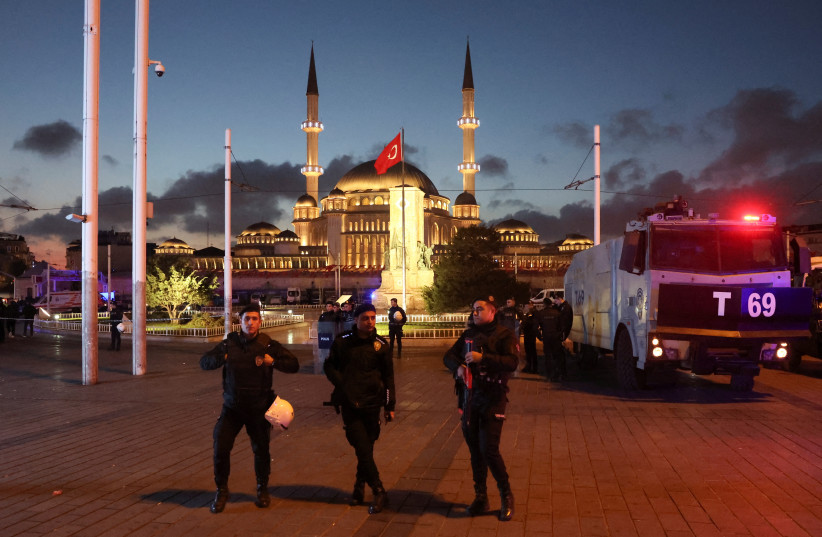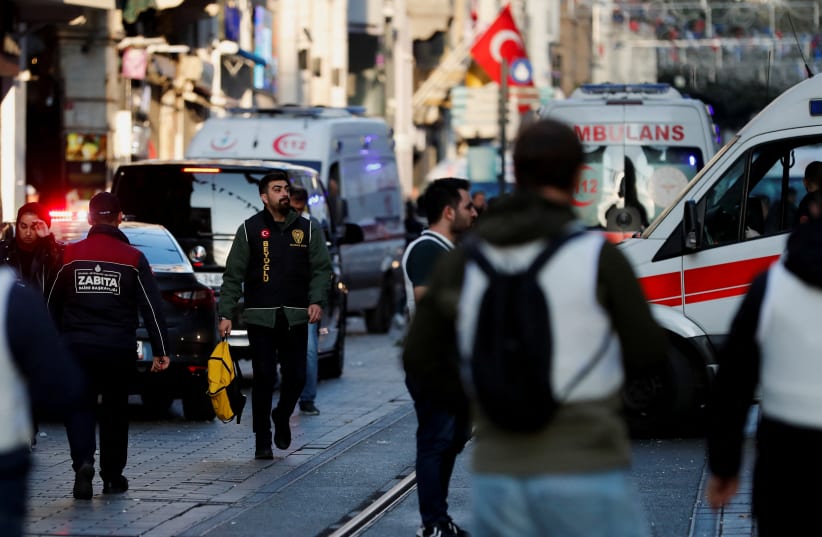As Turkey claims it has pieced together the details behind a terrorist attack in Istanbul on Sunday, many questions remain about what transpired and who is responsible.
Turkish authorities initially were reticent to call the bombing terrorism and referred to it as an “explosion,” only later saying it could have been a terrorist attack. While Ankara restricted media broadcasting about the attack, which took place at 4 p.m., the government also tried to shut down social media networks from sharing information. By Monday morning, the authorities claimed they had solved the case.
Turkey claimed to have detained 46 people by Monday afternoon. This is a lot of suspects, and it’s unclear how Ankara was able to identify them all so quickly. Was it already watching them? If it wasn’t already watching them, then how did it suddenly find 46 people linked to this one bombing so quickly?
On Tuesday, Turkey said there were 50 detained suspects. Who these suspects were and what they did was unclear. At the same time, Ankara’s state media outlets have continued to put part of the blame on the US for the attack, claiming the US supports the Kurdistan Workers Party (PKK) by working with anti-ISIS forces in Syria. Ankara views the anti-ISIS forces of the SDF as being linked to the YPG and PKK. Ankara also accused European countries of “leniency” toward the PKK.
What did Turkish authorities find after the arrest?

Ankara claims that a Syrian woman, Ahlam Albashir, placed the bomb. Photos posted on social media show her being detained. Her face looks like she has been beaten, and she is shown being choked and her face held up for cameras.
Then a video was published showing an alleged raid on her apartment, where she is seen being handcuffed. The video shows her being led away, and then a photo from the government shows her with handcuffs. In each of the photos, she appears in distress, frightened and shocked. She is wearing a purple sweatshirt that says “New York.”
The authorities found stacks of clean money in her apartment as if recently withdrawn from a bank. Turkey has not published any ID linked to the woman, and it was not clear where she is really from.
Ankara’s state media and authorities have claimed the perpetrator was trained by the “PKK/YPG/PYD terrorists in Syria.” The reports said she was trained as a “special intelligence officer” by a terrorist group.
However, her appearance and Ankara’s media outlets' claim she revealed her entire backstory seem to belie the claims she was a trained agent. It was unclear when she was allegedly recruited, where she is from in Syria, or anything else about her background. The groups that Ankara alleges “trained” her are Kurdish, but it was unclear if the perpetrator is Kurdish.
Authorities allege they have found a phone linking the suspect to Kobani, and this phone is supposed to be the link to the groups that Ankara accuses of being behind the attack. Ankara also claims it has detained someone sent to “kill her” after the attack.
This allegation would make it seem that the “terrorist” groups trained someone to carry out an attack, but then they also trained someone to kill the perpetrator.
TURKISH MEDIA showed a pistol found in the perpetrator’s apartment during the raid. However, it was unclear where she obtained it or why the terrorist group would give her a firearm and also arrange for someone to kill her.
Pro-government media in Turkey claim that the suspect was going to flee Turkey to Greece after the bombing but was caught beforehand. Why would a terrorist group plot to kill its own bomber but also arrange for her to go to Greece?
What happened?
According to the reports, the bomb went off at 4 p.m. near the Mango shop on Istiklal Street in Istanbul, a popular pedestrian street. She was detained at 2:50 a.m., around 10 hours after the bombing.
The authorities said she entered Turkey illegally, apparently from Afrin. Afrin is controlled by Turkish-backed groups and also al-Qaeda-linked HTS. On the one hand, pro-government media said she moved from Hasakah to Kobani and then Afrin before entering Turkey, but they also claimed she was in Turkey for a while.
Ankara’s media claimed to reveal most of these details soon after arresting the perpetrator. However, since that time, not many more details have been released. This leaves many questions about who the woman is and what her actual origins may be.
It also was unclear why 50 other people were detained and what their connection may be. Pro-government commentators claimed that Ankara has a lot of surveillance, which makes it easy for the police to detain the terrorist network. However, more video of the woman suspect has not been released, and the videos from the day of the attack don’t clearly indicate that the woman pictured in screengrabs is the same woman.
For instance, the woman in the screengrabs from security footage on the day of the attack is wearing camo pants. Why would a terrorist try to blend into a crowd dressed like a terrorist, with camo pants and a black jacket?
Absence of new video evidence and more clarity about how the perpetrator entered Turkey, who rented her the apartment and how she obtained the bomb means that there are still questions about the attack. The claims that Ankara believes someone was sent to assassinate the suspect illustrates a more complex conspiracy.
However, it was unclear if the alleged perpetrator might have been used by a group to carry out the attack. Ankara will need to answer more of these questions if it is to continue its claims that the US or EU are not doing enough against terrorist plots.
